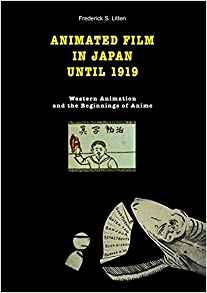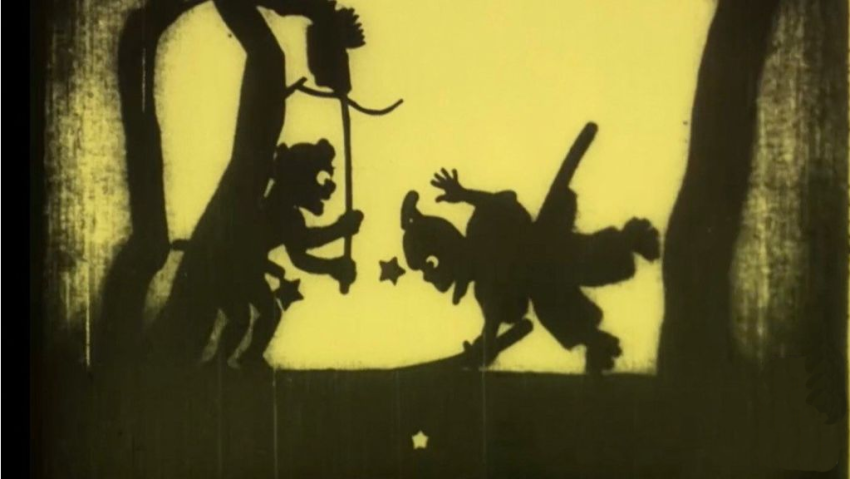Books: Early Japanese Animation
October 24, 2017 · 0 comments
By Jonathan Clements.
When the first edition of The Anime Encyclopedia was published in 2001, the early days of Japanese animation were murky and ill-defined, a matter largely of hearsay and rumour. In the years since, the ongoing digital ingestion of archival materials has thrown increasing amounts of light on the period, and Frederick Litten’s Animated Film in Japan Until 1919: Western Animation and the Beginnings of Anime is a landmark in the international study of early animation. It is, without question, the new starting point for any English-speaking scholar interested in “the dead ends and cut-off lines of those early decades,” which, as Litten himself notes, “also belong to anime’s history.”
In 160 closely-argued pages on animation in Japan and animation from Japan, Litten suggests that many scholars have committed an error of historical practice by believing the old-time hype. The 1923 Kanto Earthquake destroyed most of the materials of the early Japanese animation world, which leaves historical memory in the hands of the people with a vested interest in being remembered. Although Nobuyuki Tsugata has done fantastic work in reconstructing the life and films of the pioneer Seitaro Kitayama, Litten accuses Kitayama of “blatant self-promotion”, and calls into question much of what Kitayama wrote about his own achievements.
 Instead, Litten drills down to primary sources – largely the articles and essays written about Japanese film during the 1910s. He uncovers rich materials on the early cartoons brought into Japan from abroad, and the pre-cinema fad of “printed animation” sold as toys. Basing his argument on circumstantial evidence, advertisements, and the discourse of early film enthusiasts in Japan, he is able to date the famous Matsumoto Fragment (pictured) – a two-colour sequence of 50 frames, printed onto celluloid, widely believed to be the earliest extant “Japanese animation” – to sometime between 1905 and 1912.
Instead, Litten drills down to primary sources – largely the articles and essays written about Japanese film during the 1910s. He uncovers rich materials on the early cartoons brought into Japan from abroad, and the pre-cinema fad of “printed animation” sold as toys. Basing his argument on circumstantial evidence, advertisements, and the discourse of early film enthusiasts in Japan, he is able to date the famous Matsumoto Fragment (pictured) – a two-colour sequence of 50 frames, printed onto celluloid, widely believed to be the earliest extant “Japanese animation” – to sometime between 1905 and 1912.
Litten is an excitable detective, poking around in movie magazines and cinema listings, identifying which European cartoon is being repackaged under a Japanese title, and forming a new chronology of likely influences and inspirations for the men who would become Japan’s first animators. He is aware that there is much information still to be uncovered – the Matsumoto Fragment, for example, was not hand-drawn, but stencilled, thereby implying that there were other copies of it, and indeed other products from the same mystery seller.
When we get to 1917, the year of Japan’s “first animated films”, Litten goes through month-by-month, looking at mentions of cartoons in various publications. Amid much fascinating data and local colour, he has compelling evidence that the “first” Japanese cartoon of the historical record was probably only the first to be named in extant sources. He’s particularly good on the metadata, which is to say, all the stuff around the texts. A digitised copy of the Yomiuri Shinbun from October 1917, for example, is not only useful for whatever its articles may tell us about what’s on at the movies, but for the presence of an advert for air guns on the front page, causing Litten to question my own oh-so-noughties assumption that Junichi Kouichi’s Playful Boy’s Air Gun (1917) got him into trouble. Several scholars – including Daisuke Miyao and Katsunori Yamaguchi & Yasushi Watanabe – happen to think that it did, but the value of Litten’s methodology lies in his ability to point out that none of us cite verifiable contemporary sources for this claim, and that when he goes looking, he can’t find any.
I t’s unclear to me why this book is self-published. Litten’s scholarship is impeccable; his editorial quality consummately professional. Although he already has a PhD, in a very German tradition of becoming a doctor-doctor, this book might easily qualify him for another one. Any academic press should have been proud to publish this work, which truly advances the field. Far too often, self-publication is a sign of failed scholarship, or a deluded fear of peer review, but Litten’s work is of a superb standard.
t’s unclear to me why this book is self-published. Litten’s scholarship is impeccable; his editorial quality consummately professional. Although he already has a PhD, in a very German tradition of becoming a doctor-doctor, this book might easily qualify him for another one. Any academic press should have been proud to publish this work, which truly advances the field. Far too often, self-publication is a sign of failed scholarship, or a deluded fear of peer review, but Litten’s work is of a superb standard.
He admits himself to a certain Teutonic tone in his prose, which can overload his pages with long sentences and hyper-qualifications, but these are arguably necessary in conveying his thesis. A professional publishing house, perhaps, might have cautioned him against some asides that veer away from criticism into pedantry and nit-picking, but Litten is as hard on himself as he is on his colleagues. However, there are times where his dismissals of his predecessors can seem brusque and ungracious. Good for him that he’s got free access to the Kikuzo II Visual newspaper database, but Miyao, Yamaguchi and Watanabe were all writing before it was created. He also welcomes corrections, so he can start by getting the publication date right for the most recent edition of the Anime Encyclopedia, which was not 2013 as he claims, but 2015, which was why it was able to quote Litten’s own arguments in its section on “Early Anime”.
It was, in fact, because of Litten’s earlier publications on the subject that Helen McCarthy and I felt confident in subtitling the 2015 edition A Century of Japanese Animation, sure that “the centenary of Japanese animation has probably passed us by, unnoticed and uncelebrated, at some point before 2012.” Although the facts and fictions of Japanese animation’s early years remain foggy across the intervening decades, Litten has done much to bring clarity, and the availability of his work in an English-language hard-copy should be welcomed by animation studies scholars everywhere.
Jonathan Clements is the author of Anime: A History.

Leave a Reply